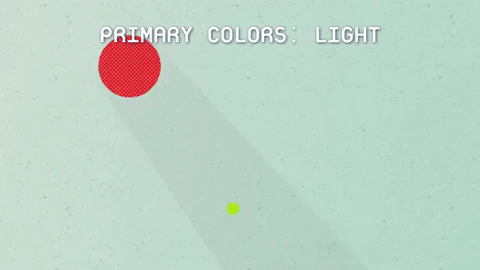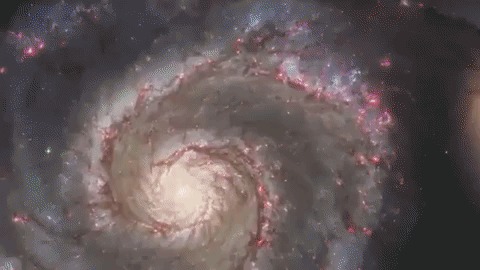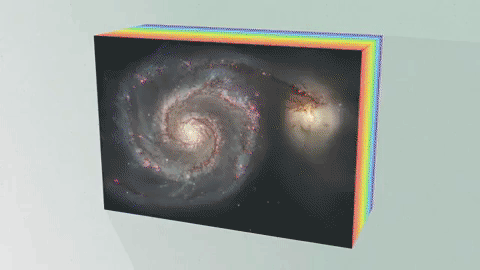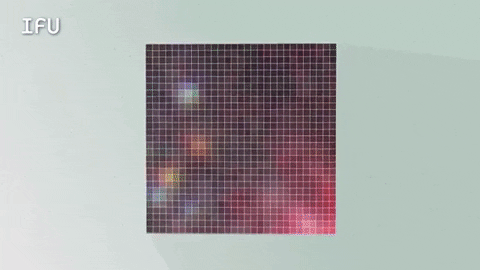Is It Safe To Look At The Eclipse If It Isn't Fully Covered By The Sun? Say 75%
Is it safe to look at the eclipse if it isn't fully covered by the sun? Say 75%
Not without proper eye wear. There will still be too much light that could burn your eyes. But you can have a ton of fun viewing the Sun using a https://eclipse.aas.org/eye-safety/projection. In fact, there is a sunspot that is now on the Sun that you should be able to see using this indirect method!
More Posts from Nasa and Others
What challenges have you overcame to get to the job that you have now? Love from Ireland ❤️
Spilling the Sun’s Secrets
You might think you know the Sun: It looks quiet and unchanging. But the Sun has secrets that scientists have been trying to figure out for decades.
One of our new missions — Parker Solar Probe — is aiming to spill the Sun’s secrets and shed new light on our neighbor in the sky.

Even though it’s 93 million miles away, the Sun is our nearest and best laboratory for understanding the inner workings of stars everywhere. We’ve been spying on the Sun with a fleet of satellites for decades, but we’ve never gotten a close-up of our nearest star.
This summer, Parker Solar Probe is launching into an orbit that will take it far closer to the Sun than any instrument has ever gone. It will fly close enough to touch the Sun, sweeping through the outer atmosphere — the corona — 4 million miles above the surface.

This unique viewpoint will do a lot more than provide gossip on the Sun. Scientists will take measurements to help us understand the Sun’s secrets — including those that can affect Earth.
Parker Solar Probe is equipped with four suites of instruments that will take detailed measurements from within the Sun's corona, all protected by a special heat shield to keep them safe and cool in the Sun's ferocious heat.

The corona itself is home to one of the Sun’s biggest secrets: The corona's mysteriously high temperatures. The corona, a region of the Sun’s outer atmosphere, is hundreds of times hotter than the surface below. That's counterintuitive, like if you got warmer the farther you walked from a campfire, but scientists don’t yet know why that's the case.

Some think the excess heat is delivered by electromagnetic waves called Alfvén waves moving outwards from the Sun’s surface. Others think it might be due to nanoflares — bomb-like explosions that occur on the Sun’s surface, similar to the flares we can see with telescopes from Earth, but smaller and much more frequent. Either way, Parker Solar Probe's measurements direct from this region itself should help us pin down what's really going on.

We also want to find out what exactly accelerates the solar wind — the Sun's constant outpouring of material that rushes out at a million miles per hour and fills the Solar System far past the orbit of Pluto. The solar wind can cause space weather when it reaches Earth — triggering things like the aurora, satellite problems, and even, in rare cases, power outages.
We know where the solar wind comes from, and that it gains its speed somewhere in the corona, but the exact mechanism of that acceleration is a mystery. By sampling particles directly at the scene of the crime, scientists hope Parker Solar Probe can help crack this case.

Parker Solar Probe should also help us uncover the secrets of some of the fastest particles from the Sun. Solar energetic particles can reach speeds of more than 50% the speed of light, and they can interfere with satellites with little warning because of how fast they move. We don't know how they get so fast — but it's another mystery that should be solved with Parker Solar Probe on the case.

Parker Solar Probe launches summer 2018 on a seven-year mission to touch the Sun. Keep up with the latest on the Sun at @NASASun on Twitter, and follow along with Parker Solar Probe's last steps to launch at nasa.gov/solarprobe.
Make sure to follow us on Tumblr for your regular dose of space: http://nasa.tumblr.com.
Largest Batch of Earth-size, Habitable Zone Planets
Our Spitzer Space Telescope has revealed the first known system of seven Earth-size planets around a single star. Three of these planets are firmly located in an area called the habitable zone, where liquid water is most likely to exist on a rocky planet.

This exoplanet system is called TRAPPIST-1, named for The Transiting Planets and Planetesimals Small Telescope (TRAPPIST) in Chile. In May 2016, researchers using TRAPPIST announced they had discovered three planets in the system.

Assisted by several ground-based telescopes, Spitzer confirmed the existence of two of these planets and discovered five additional ones, increasing the number of known planets in the system to seven.

This is the FIRST time three terrestrial planets have been found in the habitable zone of a star, and this is the FIRST time we have been able to measure both the masses and the radius for habitable zone Earth-sized planets.
All of these seven planets could have liquid water, key to life as we know it, under the right atmospheric conditions, but the chances are highest with the three in the habitable zone.

At about 40 light-years (235 trillion miles) from Earth, the system of planets is relatively close to us, in the constellation Aquarius. Because they are located outside of our solar system, these planets are scientifically known as exoplanets. To clarify, exoplanets are planets outside our solar system that orbit a sun-like star.

In this animation, you can see the planets orbiting the star, with the green area representing the famous habitable zone, defined as the range of distance to the star for which an Earth-like planet is the most likely to harbor abundant liquid water on its surface. Planets e, f and g fall in the habitable zone of the star.
Using Spitzer data, the team precisely measured the sizes of the seven planets and developed first estimates of the masses of six of them. The mass of the seventh and farthest exoplanet has not yet been estimated.

For comparison…if our sun was the size of a basketball, the TRAPPIST-1 star would be the size of a golf ball.
Based on their densities, all of the TRAPPIST-1 planets are likely to be rocky. Further observations will not only help determine whether they are rich in water, but also possibly reveal whether any could have liquid water on their surfaces.
The sun at the center of this system is classified as an ultra-cool dwarf and is so cool that liquid water could survive on planets orbiting very close to it, closer than is possible on planets in our solar system. All seven of the TRAPPIST-1 planetary orbits are closer to their host star than Mercury is to our sun.

The planets also are very close to each other. How close? Well, if a person was standing on one of the planet’s surface, they could gaze up and potentially see geological features or clouds of neighboring worlds, which would sometimes appear larger than the moon in Earth’s sky.

The planets may also be tidally-locked to their star, which means the same side of the planet is always facing the star, therefore each side is either perpetual day or night. This could mean they have weather patterns totally unlike those on Earth, such as strong wind blowing from the day side to the night side, and extreme temperature changes.

Because most TRAPPIST-1 planets are likely to be rocky, and they are very close to one another, scientists view the Galilean moons of Jupiter – lo, Europa, Callisto, Ganymede – as good comparisons in our solar system. All of these moons are also tidally locked to Jupiter. The TRAPPIST-1 star is only slightly wider than Jupiter, yet much warmer.
How Did the Spitzer Space Telescope Detect this System?
Spitzer, an infrared telescope that trails Earth as it orbits the sun, was well-suited for studying TRAPPIST-1 because the star glows brightest in infrared light, whose wavelengths are longer than the eye can see. Spitzer is uniquely positioned in its orbit to observe enough crossing (aka transits) of the planets in front of the host star to reveal the complex architecture of the system.

Every time a planet passes by, or transits, a star, it blocks out some light. Spitzer measured the dips in light and based on how big the dip, you can determine the size of the planet. The timing of the transits tells you how long it takes for the planet to orbit the star.

The TRAPPIST-1 system provides one of the best opportunities in the next decade to study the atmospheres around Earth-size planets. Spitzer, Hubble and Kepler will help astronomers plan for follow-up studies using our upcoming James Webb Space Telescope, launching in 2018. With much greater sensitivity, Webb will be able to detect the chemical fingerprints of water, methane, oxygen, ozone and other components of a planet’s atmosphere.
At 40 light-years away, humans won’t be visiting this system in person anytime soon...that said...this poster can help us imagine what it would be like:

Make sure to follow us on Tumblr for your regular dose of space: http://nasa.tumblr.com
What’s Up for July 2016?

What's Up for July? Use Saturn as your guide to a tour of the summer Milky Way.

Saturn continues to dazzle this month. Its wide rings and golden color provide a nice contrast to nearby Mars and Antares. Below Saturn lies the constellation Scorpius, which really does look like a scorpion!

Through binoculars or telescopes you'll be able to spot two pretty star clusters: a compact (or globular) cluster, M-4, and an open cluster, M-7. M-7 is known as Ptolemy's cluster. It was observed and cataloged by Greek-Egyptian astronomer Ptolemy in the first century.

Climbing north, you'll be able to spot the teapot shape which forms part of the constellation Sagittarius. The center of the Milky Way is easy to see. It looks like bright steam rising from the teapot's spout.

With difficulty, a good star chart and a medium-sized telescope you can locate faint Pluto in the "teaspoon" adjacent to the teapot.

A binocular tour of this center core of the Milky Way reveals many beautiful summer sky objects. We first encounter the Eagle Nebula, M-16. Part of this nebula is featured in the famous and beautiful "Pillars of Creation" images taken by our Hubble Space Telescope.

You'll have to stay up later to see the northern Milky Way constellations, which are better placed for viewing later in the summer and fall. Cygnus the swan features the prettiest supernova remnant in the entire sky, the Veil Nebula. It's too big to fit in one eyepiece view, but luckily there are three sections of it.

Look between Aquila and Cygnus to find three tiny constellations: Delphinus the dolphin, Vulpecula the fox and Lyra the lyre (or harp). M-57, the Ring Nebula, is the remains from a shell of ionized gas expelled by a red giant star into the surrounding interstellar medium. It's pretty, too! Look in Vulpecula for the Dumbbell, another planetary nebula.

We'll end our summer tour with Lacerta the lizard and Draco the Dragon. Lacerta is home to a star with an extrasolar planet in its orbit, and Draco, facing away from the center of our Milky Way, is a treasure trove of distant galaxies to catch in your telescope.
Watch the full What’s Up for July 2016 video HERE.
You can catch up on current missions and space telescopes studying our Milky Way and beyond at www.nasa.gov.
Make sure to follow us on Tumblr for your regular dose of space: http://nasa.tumblr.com
Experience High-Res Science in First 8K Footage from Space
Fans of science in space can now experience fast-moving footage in even higher definition as NASA delivers the first 8K ultra high definition (UHD) video of astronauts living, working and conducting research from the International Space Station.

The same engineers who sent high-definition (HD) cameras, 3D cameras, and a camera capable of recording 4K footage to the space station have now delivered a new camera– Helium 8K camera by RED – capable of recording images with four times the resolution than the previous camera offered.

Let’s compare this camera to others: The Helium 8K camera is capable of shooting at resolutions ranging from conventional HDTV up to 8K, specifically 8192 x 4320 pixels. By comparison, the average HD consumer television displays up to 1920 x 1080 pixels of resolution, and digital cinemas typically project 2K to 4K.

Viewers can watch as crew members advance DNA sequencing in space with the BEST investigation, study dynamic forces between sediment particles with BCAT-CS, learn about genetic differences in space-grown and Earth-grown plants with Plant Habitat-1, observe low-speed water jets to improve combustion processes within engines with Atomization and explore station facilities such as the MELFI, the Plant Habitat, the Life Support Rack, the JEM Airlock and the CanadArm2.

Delivered to the station aboard the fourteenth SpaceX cargo resupply mission through a Space Act Agreement between NASA and RED, this camera’s ability to record twice the pixels and at resolutions four times higher than the 4K camera brings science in orbit into the homes, laboratories and classrooms of everyone on Earth.
While the 8K resolutions are optimal for showing on movie screens, NASA video editors are working on space station footage for public viewing on YouTube. Viewers will be able to watch high-resolution footage from inside and outside the orbiting laboratory right on their computer screens. Viewers will need a screen capable of displaying 8K resolution for the full effect, but the imagery still trumps that of standard cameras. RED videos and pictures are shot at a higher fidelity and then down-converted, meaning much more information is captured in the images, which results in higher-quality playback, even if viewers don't have an 8K screen.
The full UHD files are available for download for use in broadcast. Read the NASA media usage guidelines.
As an engineering undergrad how can I contribute to the space exploration program?
Next stop: Mars! Watch NASA's Perseverance Rover Attempt the Most Dangerous Landing to Date on Feb. 18
Tomorrow, Feb. 18, 2021, our most advanced rover named Perseverance will attempt a precision landing in Mars' Jezero Crater. Her mission is to search for signs of ancient life in the planet's geology and test technology that will pave the way for future human missions to the Moon and Mars. Excited yet? Get this:
Perseverance is ferrying 25 cameras to the Red Planet — the most ever flown in the history of deep-space exploration — so get ready to see Mars like never before! For more mission quick facts, click here.
When to watch:
Date: Feb. 18
Time: Live coverage starts at 2:15 p.m. EST (19:15 UTC)
SET A REMINDER & WATCH LIVE HERE
Want to join the #CountdownToMars? We created a virtual Mars photo booth, have sounds of Mars to listen to and more for all you Earthlings to channel your inner Martian. Check out ways to participate HERE.
If you want to follow Perseverance's journey on the Red Planet, be sure to follow her on Facebook and Twitter.
Make sure to follow us on Tumblr for your regular dose of space: http://nasa.tumblr.com
Solar System: Things to Know This Week
Our solar system is huge, so let us break it down for you. Here are five things you need to know this week:
1. The Lure of the Rings

Scientists and stargazers alike can’t resist the call of Saturn’s rings, or of its moon Titan. Both have been under close scrutiny by the Cassini spacecraft lately, and there are striking new pictures to prove it. Check out the latest images HERE.
2. A New Moon Rises

The Lunar Reconnaissance Orbiter has captured dramatic landscapes on the moon for more than six years. “A New Moon Rises,” now on display at the Smithsonian National Air and Space Museum in Washington, DC, showcases those images ranging from Apollo landing sites to mountains that rise out of the darkness of the lunar poles. See an online version of the exhibit HERE.
3. Around the (Giant) World in (Just Under) 88 Days

The Juno mission is closing in on Jupiter. On July 4, the spacecraft enters orbit around the king of planets. Learn more about Juno HERE.
4. Spiders and Volcanoes and Glaciers, Oh My

The more data that New Horizons spacecraft sends down about Pluto and its moons, the more there is to fascinate explorers, from spider-shaped canyons to signs of glacial flow. Take a peek at the new finds on Pluto HERE.
5. World of Wonders

Hexagonal craters, mysterious mountains, eye-catching bright patches — the dwarf planet Ceres is proving to be an intriguing place. The Dawn mission is looking for clues to how it works. See the latest from Ceres HERE.
Want to learn more? Read our full list of the 10 things to know this week about the solar system HERE.
Make sure to follow us on Tumblr for your regular dose of space: http://nasa.tumblr.com
How Do Space Telescopes Break Down Light?
Space telescopes like Hubble and our upcoming James Webb Space Telescope use light not only to create images, but can also break light down into individual colors (or wavelengths). Studying light this way can give us a lot of detail about the object that emitted that light. For example, studying the components of the light from exoplanets can tell us about its atmosphere’s color, chemical makeup, and temperature. How does this work?
Remember the primary colors you learned about in elementary school?
Those colors are known as the pigment or subtractive colors. Every other color is some combination of the primary colors: red, yellow, and blue.

Light also has its own primary colors, and they work in a similar way. These colors are known as additive or light colors.

TVs make use of light’s colors to create the pictures we see. Each pixel of a TV screen contains some amount of red, green and blue light. The amount of each light determines the overall color of the pixel. So, each color on the TV comes from a combination of the primary colors of light: red, green and blue.

Space telescope images of celestial objects are also a combination of the colors of light.

Every pixel that is collected can be broken down into its base colors. To learn even more, astronomers break the red, green and blue light down into even smaller sections called wavelengths.
This breakdown is called a spectrum.

With the right technology, every pixel of light can also be measured as a spectrum.

Images show us the big picture, while a spectrum reveals finer details. Astronomers use spectra to learn things like what molecules are in planet atmospheres and distant galaxies.

An Integral Field Unit, or IFU, is a special tool on the James Webb Space Telescope that captures images and spectra at the same time.

The IFU creates a unique spectrum for each pixel of the image the telescope is capturing, providing scientists with an enormous amount of valuable, detailed data. So, with an IFU we can get an image, many spectra and a better understanding of our universe.
Watch the full video where this method of learning about planetary atmospheres is explained:
The James Webb Space Telescope is our upcoming infrared space observatory, which will launch in 2021. It will spy the first galaxies that formed in the universe and shed light on how galaxies evolve, how stars and planetary systems are born and tell us about potentially habitable planets around other stars.
To learn more about NASA’s James Webb Space Telescope, visit the website, or follow the mission on Facebook, Twitter and Instagram.
Text and graphics credit: Space Telescope Science Institute
Make sure to follow us on Tumblr for your regular dose of space: http://nasa.tumblr.com.
Solar System: 10 Things to Know This Week
Pioneer Days
Someone’s got to be first. In space, the first explorers beyond Mars were Pioneers 10 and 11, twin robots who charted the course to the cosmos.

1-Before Voyager

Voyager, with its outer solar system tour and interstellar observations, is often credited as the greatest robotic space mission. But today we remember the plucky Pioneers, the spacecraft that proved Voyager’s epic mission was possible.
2-Where No One Had Gone Before

Forty-five years ago this week, scientists still weren’t sure how hard it would be to navigate the main asteroid belt, a massive field of rocky debris between Mars and Jupiter. Pioneer 10 helped them work that out, emerging from first the first six-month crossing in February 1973. Pioneer 10 logged a few meteoroid hits (fewer than expected) and taught engineers new tricks for navigating farther and farther beyond Earth.
3-Trailblazer No. 2

Pioneer 11 was a backup spacecraft launched in 1973 after Pioneer 10 cleared the asteroid belt. The new mission provided a second close look at Jupiter, the first close-up views of Saturn and also gave Voyager engineers plotting an epic multi-planet tour of the outer planets a chance to practice the art of interplanetary navigation.
4-First to Jupiter

Three-hundred and sixty-three years after humankind first looked at Jupiter through a telescope, Pioneer 10 became the first human-made visitor to the Jovian system in December 1973. The spacecraft spacecraft snapped about 300 photos during a flyby that brought it within 81,000 miles (about 130,000 kilometers) of the giant planet’s cloud tops.
5-Pioneer Family

Pioneer began as a Moon program in the 1950s and evolved into increasingly more complicated spacecraft, including a Pioneer Venus mission that delivered a series of probes to explore deep into the mysterious toxic clouds of Venus. A family portrait (above) showing (from left to right) Pioneers 6-9, 10 and 11 and the Pioneer Venus Orbiter and Multiprobe series. Image date: March 11, 1982.
6-A Pioneer and a Pioneer

Classic rock has Van Halen, we have Van Allen. With credits from Explorer 1 to Pioneer 11, James Van Allen was a rock star in the emerging world of planetary exploration. Van Allen (1914-2006) is credited with the first scientific discovery in outer space and was a fixture in the Pioneer program. Van Allen was a key part of the team from the early attempts to explore the Moon (he’s pictured here with Pioneer 4) to the more evolved science platforms aboard Pioneers 10 and 11.
7-The Farthest...For a While

For more than 25 years, Pioneer 10 was the most distant human-made object, breaking records by crossing the asteroid belt, the orbit of Jupiter and eventually even the orbit of Pluto. Voyager 1, moving even faster, claimed the most distant title in February 1998 and still holds that crown.
8-Last Contact

We last heard from Pioneer 10 on Jan. 23, 2003. Engineers felt its power source was depleted and no further contact should be expected. We tried again in 2006, but had no luck. The last transmission from Pioneer 11 was received in September 1995. Both missions were planned to last about two years.
9-Galactic Ghost Ships

Pioneers 10 and 11 are two of five spacecraft with sufficient velocity to escape our solar system and travel into interstellar space. The other three—Voyagers 1 and 2 and New Horizons—are still actively talking to Earth. The twin Pioneers are now silent. Pioneer 10 is heading generally for the red star Aldebaran, which forms the eye of Taurus (The Bull). It will take Pioneer over 2 million years to reach it. Pioneer 11 is headed toward the constellation of Aquila (The Eagle) and will pass nearby in about 4 million years.
10-The Original Message to the Cosmos

Years before Voyager’s famed Golden Record, Pioneers 10 and 11 carried the original message from Earth to the cosmos. Like Voyager’s record, the Pioneer plaque was the brainchild of Carl Sagan who wanted any alien civilization who might encounter the craft to know who made it and how to contact them. The plaques give our location in the galaxy and depicts a man and woman drawn in relation to the spacecraft.
Read the full version of this week’s 10 Things article HERE.
Make sure to follow us on Tumblr for your regular dose of space: http://nasa.tumblr.com.
-
 john-erby liked this · 3 years ago
john-erby liked this · 3 years ago -
 2reputationpegacorns liked this · 3 years ago
2reputationpegacorns liked this · 3 years ago -
 small-softmin liked this · 6 years ago
small-softmin liked this · 6 years ago -
 lxlteo liked this · 7 years ago
lxlteo liked this · 7 years ago -
 drholmestuck reblogged this · 7 years ago
drholmestuck reblogged this · 7 years ago -
 rjpetsupplies-blog liked this · 7 years ago
rjpetsupplies-blog liked this · 7 years ago -
 chameleon-circuit5727 liked this · 7 years ago
chameleon-circuit5727 liked this · 7 years ago -
 chameleon-circuit5727 reblogged this · 7 years ago
chameleon-circuit5727 reblogged this · 7 years ago -
 krekdon liked this · 7 years ago
krekdon liked this · 7 years ago -
 analgesicsleep reblogged this · 7 years ago
analgesicsleep reblogged this · 7 years ago -
 analgesicsleep reblogged this · 7 years ago
analgesicsleep reblogged this · 7 years ago -
 letssaynotonormal reblogged this · 7 years ago
letssaynotonormal reblogged this · 7 years ago -
 letssaynotonormal liked this · 7 years ago
letssaynotonormal liked this · 7 years ago -
 diosmio-lacreatura reblogged this · 7 years ago
diosmio-lacreatura reblogged this · 7 years ago -
 diosmio-lacreatura liked this · 7 years ago
diosmio-lacreatura liked this · 7 years ago -
 dzianisnazaruk liked this · 7 years ago
dzianisnazaruk liked this · 7 years ago -
 blooming-cottonfields reblogged this · 7 years ago
blooming-cottonfields reblogged this · 7 years ago -
 honeyandsunflower liked this · 7 years ago
honeyandsunflower liked this · 7 years ago -
 big-blueboy-scout reblogged this · 7 years ago
big-blueboy-scout reblogged this · 7 years ago -
 big-blueboy-scout liked this · 7 years ago
big-blueboy-scout liked this · 7 years ago -
 doevademe liked this · 7 years ago
doevademe liked this · 7 years ago -
 32kimmich reblogged this · 7 years ago
32kimmich reblogged this · 7 years ago -
 solongstarbird liked this · 7 years ago
solongstarbird liked this · 7 years ago -
 kirbyfanneox liked this · 7 years ago
kirbyfanneox liked this · 7 years ago -
 crayoncoloredscarves reblogged this · 7 years ago
crayoncoloredscarves reblogged this · 7 years ago -
 animenutcase reblogged this · 7 years ago
animenutcase reblogged this · 7 years ago -
 tinybunbuns liked this · 7 years ago
tinybunbuns liked this · 7 years ago -
 catwomanfiles liked this · 7 years ago
catwomanfiles liked this · 7 years ago -
 strawberry-baphomet liked this · 7 years ago
strawberry-baphomet liked this · 7 years ago -
 andred02 liked this · 7 years ago
andred02 liked this · 7 years ago -
 ffire-and-ice liked this · 7 years ago
ffire-and-ice liked this · 7 years ago -
 brengar419 liked this · 7 years ago
brengar419 liked this · 7 years ago -
 lectronyx liked this · 7 years ago
lectronyx liked this · 7 years ago -
 mrbgs101 reblogged this · 7 years ago
mrbgs101 reblogged this · 7 years ago -
 mrbgs101 liked this · 7 years ago
mrbgs101 liked this · 7 years ago -
 exposedtechuk-blog liked this · 7 years ago
exposedtechuk-blog liked this · 7 years ago -
 natarisaru liked this · 7 years ago
natarisaru liked this · 7 years ago -
 ask-kyle-and-tweek liked this · 7 years ago
ask-kyle-and-tweek liked this · 7 years ago -
 takashi0 reblogged this · 7 years ago
takashi0 reblogged this · 7 years ago
Explore the universe and discover our home planet with the official NASA Tumblr account
1K posts